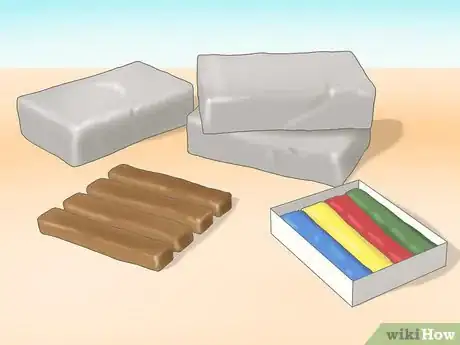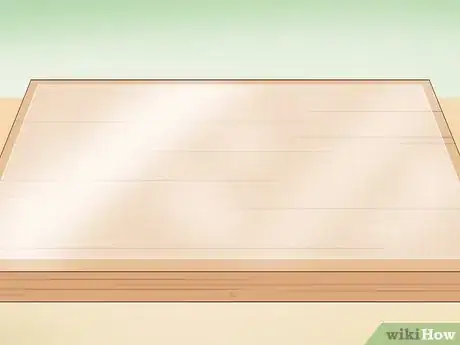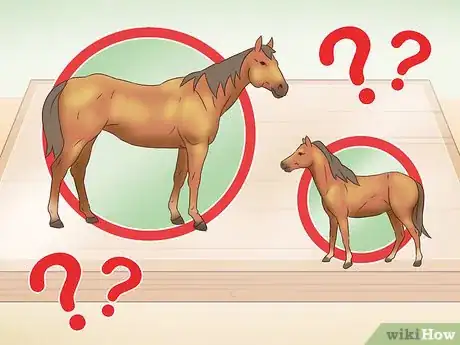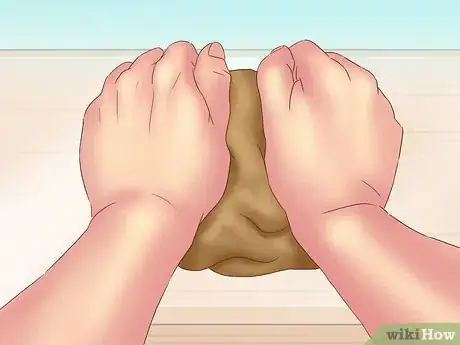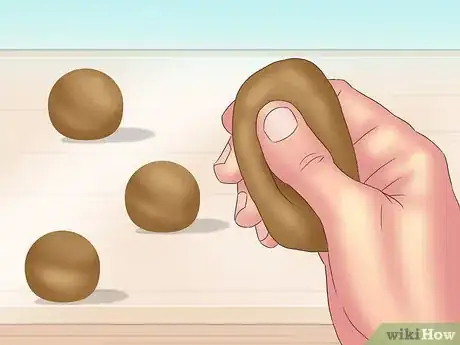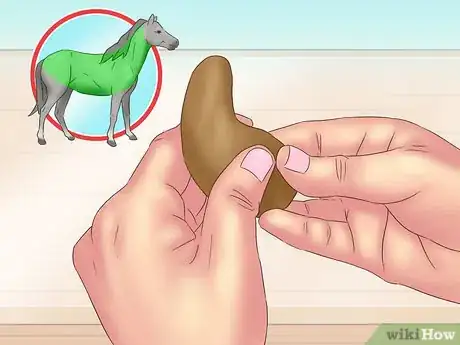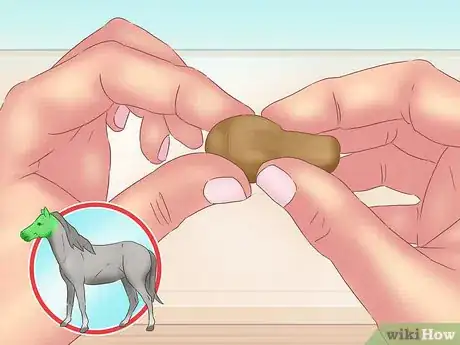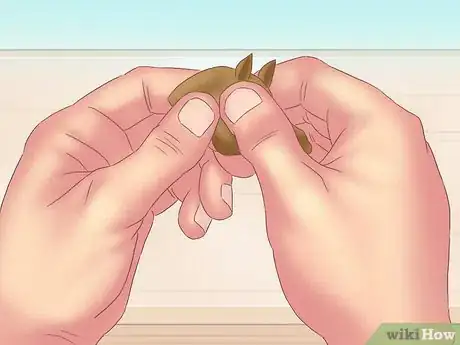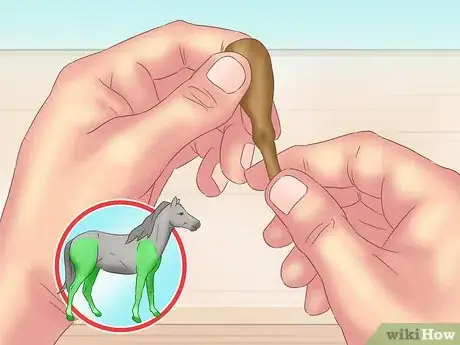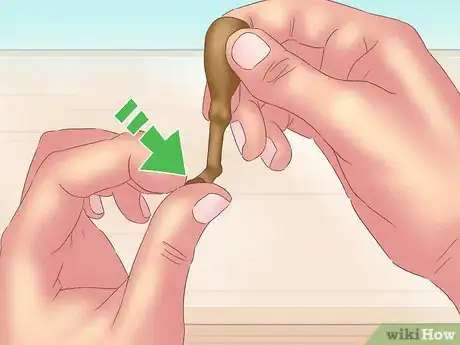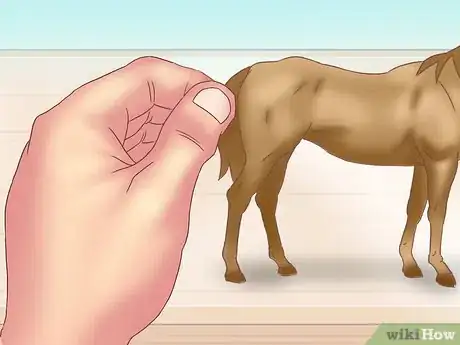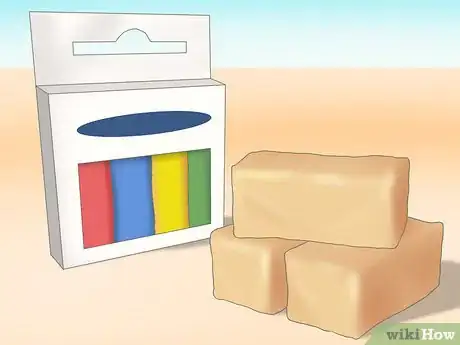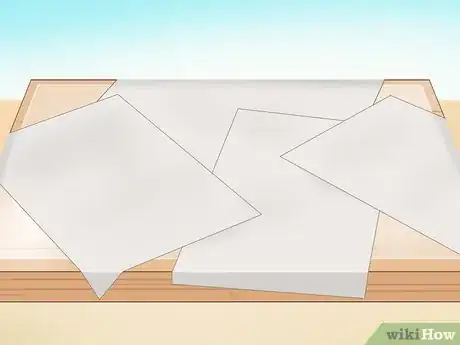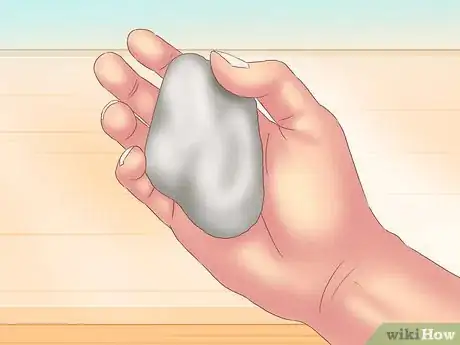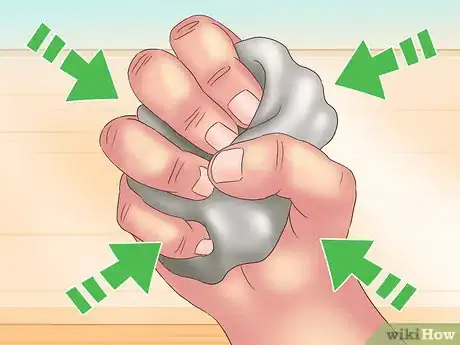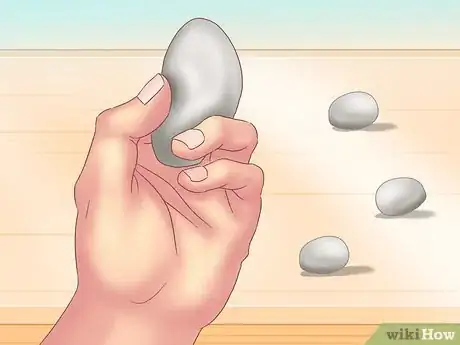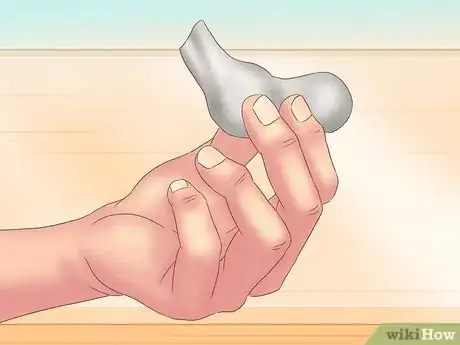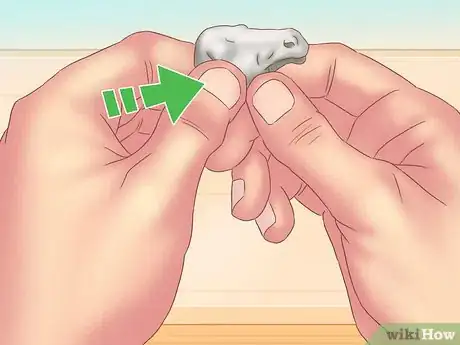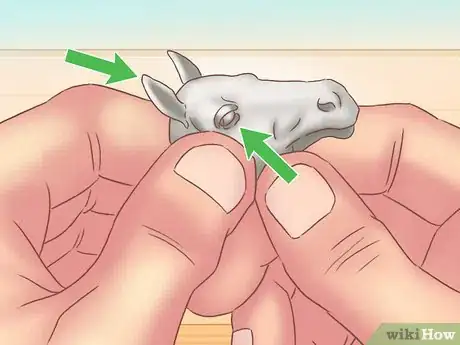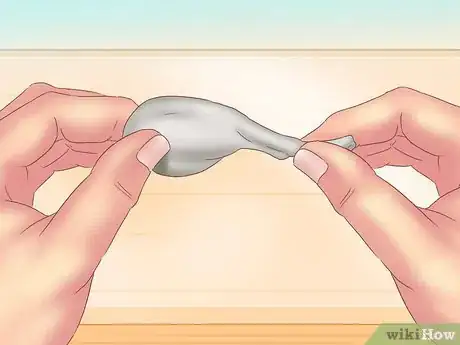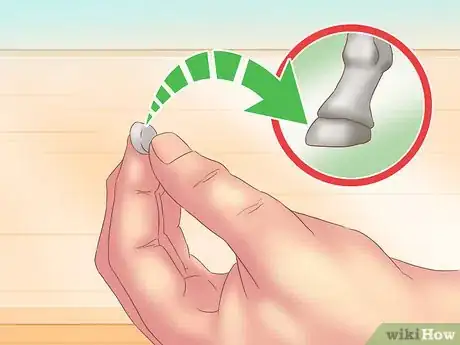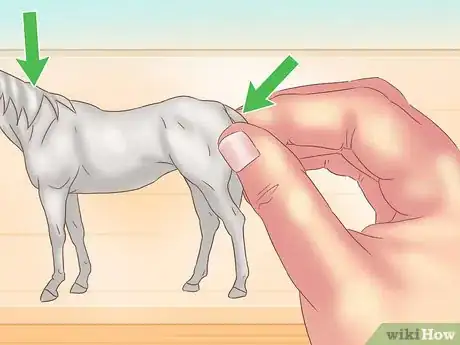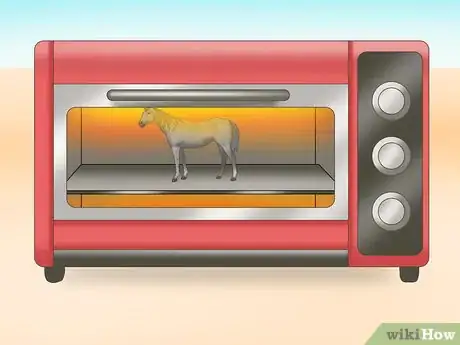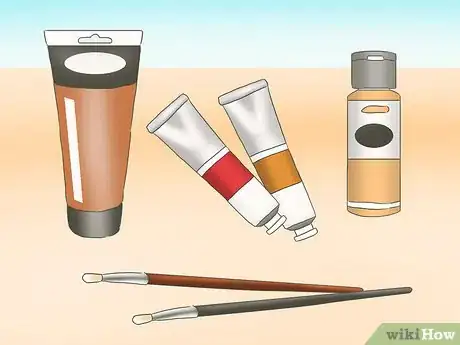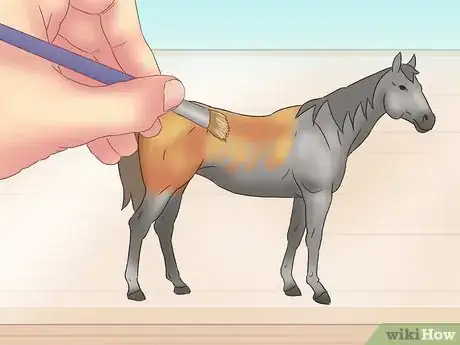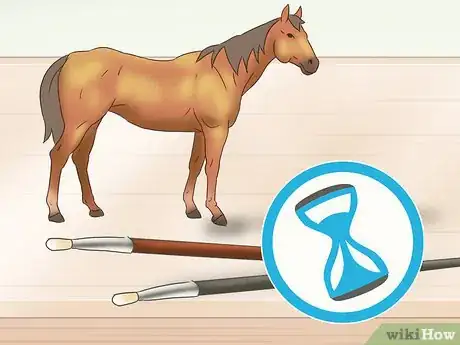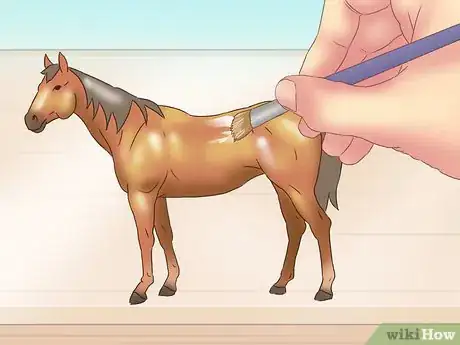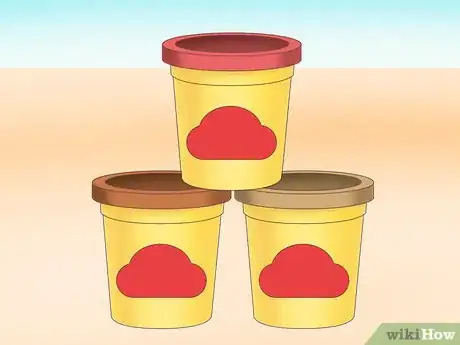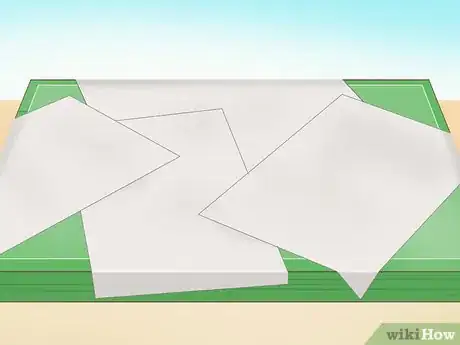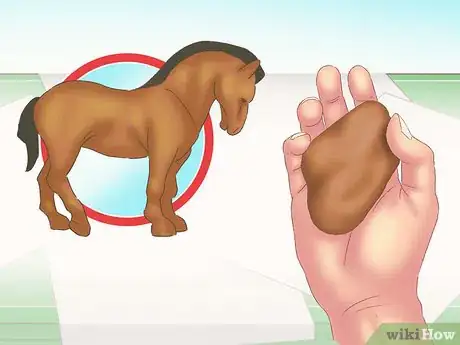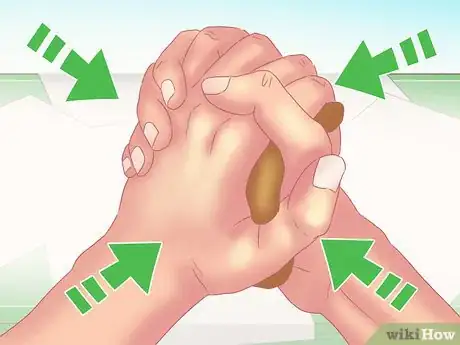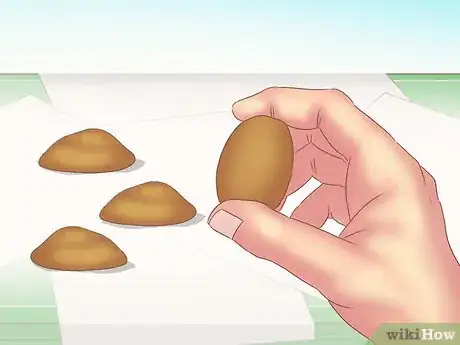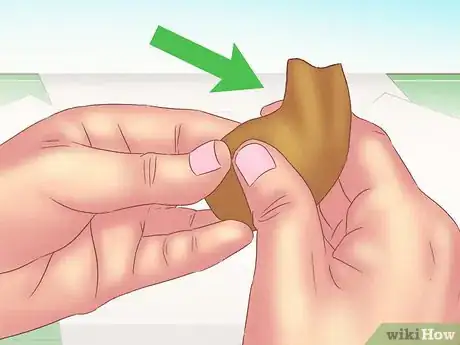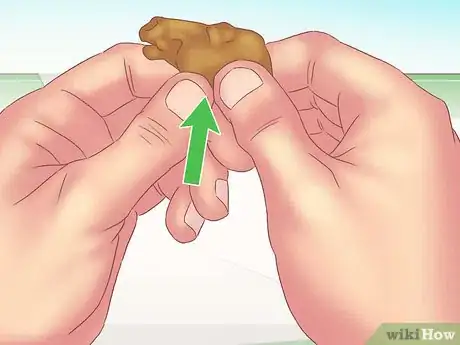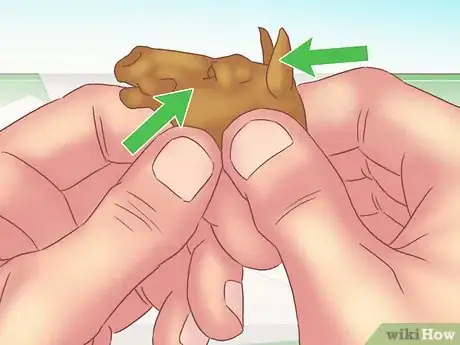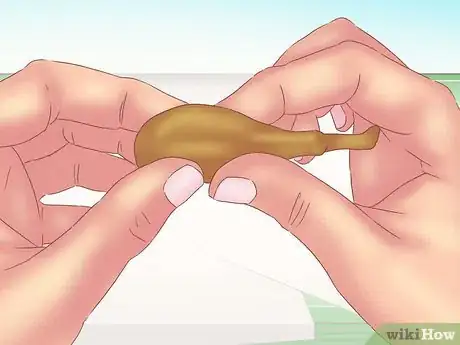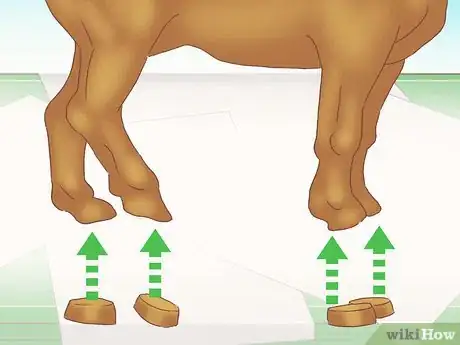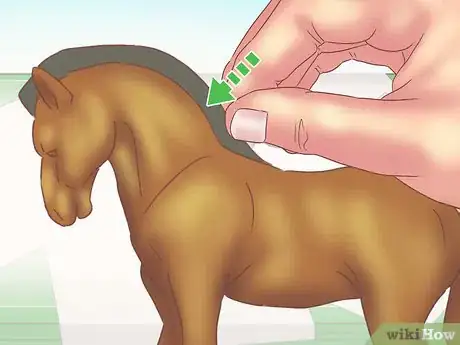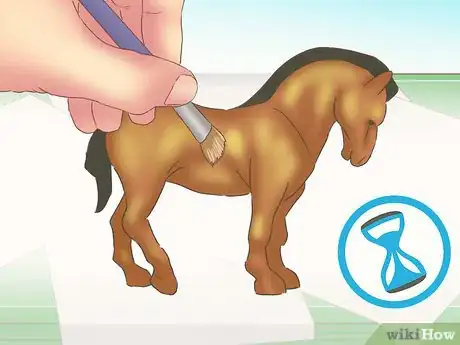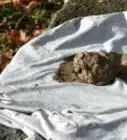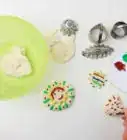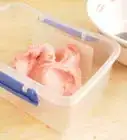This article was co-authored by wikiHow Staff. Our trained team of editors and researchers validate articles for accuracy and comprehensiveness. wikiHow's Content Management Team carefully monitors the work from our editorial staff to ensure that each article is backed by trusted research and meets our high quality standards.
There are 10 references cited in this article, which can be found at the bottom of the page.
This article has been viewed 83,256 times.
Learn more...
Crafting a clay horse is a great way to pay tribute the beloved animal and best of all you’re left with your very own handmade figurine to play with or proudly display. Decide what kind of clay best suits your project and vision, wear an apron and/or clothes you don’t mind getting dirty, and get ready to sculpt.
Steps
Creating a Horse Using Modeling Clay
-
1Determine if the type of modeling clay is the best option for your project. Many modeling clays are oil-based or wax-based, which means that they do not dry out. In fact, these clays can be exposed to air yet remain malleable for long periods of time, allowing you both to move and reshape your creations at will and to preserve your pieces for long periods of time.[1]
- Modeling clay is also sturdier than a material like play-doh and typically holds its shape better, making it easier to craft more detailed pieces. [2]
- Note, though, that oil and wax-based modeling clays cannot be hardened, and painting these kinds of clay is not recommended.[3] If you would like to be able to paint on your clay horse, polymer clay might work better for you.
-
2Prepare your work surface. Find a hard, flat surface to work on. Oil-based modeling clays can be messy and can leave greasy stains on uncovered work surfaces, so depending on how clean you’d like to keep that surface, you may find it helpful to cover your workstation with newspaper, wax paper, or saran wrap.Advertisement
-
3Decide how big you’d like your sculpture to be. Based on what size of horse you’d like to make your horse, estimate how much clay you’ll need.
- If you are new to clay modeling, you may want to avoid getting too overambitious with the scale of your horse; instead, start with a piece of clay that you can hold comfortably in one hand.
-
4Knead and warm your clay. Once you’ve got the right amount of clay, begin either squeezing it between your hands or place the clay on your work surface and knead it like bread dough. Continue squeezing or kneading until the clay is warm, soft, and easy to work with.
-
5Divide your clay into sections. Cut your clay into four pieces using a craft knife, wire clay cutter, or your hands. One piece should be slightly larger than the the other three (which should all be approximately the same size).
-
6Model the horse’s neck and torso. Take your largest piece of clay and mold it into an oblong circle. Gently pinch one end of your oblong circle and pull it upwards to form your horse’s neck.
- Since you’ll want your horse’s body to be able to support its head, be sure not make the neck too long or too thin.
-
7Form your horse’s head. Begin by mold one of your three equal-sized clay pieces into a peanut shape. Next, gently pinch one end of your peanut shape, elongating it (this will be your horse’s nose and mouth).
-
8Create facial features. Using another one of your three equal-sized sections, craft two triangle-shaped ears and two round eyes; be sure to set aside some of this clay for your mane and tail, though. Carefully attach your eyes and ears to the larger end of the horse’s head. Finally, attach your completed head to your horse’s neck.
-
9Mold the horse’s legs. Cut your third play-doh section into four smaller pieces of equal size. Create long cylinder-shaped legs by rolling each of these pieces between your fingers until they're a length and width that look proportionate in relation to your horse's torso.
- The thickness and height of your legs will depend on whether or not you'd like your horse to be able to stand upright. Thicker and shorter legs, for instance, will make for a sturdier base.
-
10Mold and attach your hooves. Break off a small piece of clay from one end of each cylinder to use for your hooves. Roll each hoof into a ball. Pinch each ball between your thumb and pointer finger, making them into short cylinders. Attach one of these short cylinders to the bottom of each leg. Now attach two legs to front end of your horse’s torso and two to the back end.
-
11Add a mane and tail. Break the last of your clay into smaller pieces and form these pieces into strands or chunks of hair. To complete your horse, attach your tail to the rear end of the horse’s torso and your mane to the back of the horse’s head and neck and between its ears.
Sculpting a Horse using Polymer Clay
-
1Decide if polymer clay is the material that best suits your project. Pieces made from polymer clay can be put in the oven to harden (although you can also purchase air dry polymer clay), making it a good choice if preserving your sculpture is important to you.
- Polymer clay can also be painted, which is ideal if you are looking to create a more detailed clay model.
- Keep in mind that young children should never attempt to bake their polymer creations on their own; adult supervision is always required when using an oven.
-
2Get your work surface ready. Find a hard, flat surface to work on. Cover your work surface in newspaper if you are concerned with messiness.
-
3Figure out how much clay you’ll need. While the scale of your model is ultimately up to you, remember that larger pieces will take longer to cure in the oven. We suggest that you use an amount of clay that you can hold easily in the palm of one hand.
-
4Warm your clay. To make your polymer clay as malleable as possible, begin by squeezing it between your hands. Work your until the clay is warm, soft, and easy to work with.
- You may also choose to place the clay on your work surface and knead it like bread dough.
-
5Separate your clay into four sections. You can use your hands, a craft knife, or a wire clay cutter to divide your clay. One of your four piece should be slightly larger than the rest, and the remaining three sections should be of roughly equal size.
-
6Create your horse’s neck and torso. Mold your largest piece of clay into an oblong circle. Now gently pinch one end of your oblong circle and pull it upwards to create a neck.
- Make sure the neck isn’t too long or too thin -- if it is it won’t be able to support your horse’s head.
-
7Mold a head. Take one of your three equal-sized clay pieces and turn it into a peanut shape. Next, gently pinch one end of your peanut shape, elongating it, to make your horse’s nose and mouth.
-
8Create and add eyes and ears. Using another one of your three equal-sized sections, create two triangle-shaped ears and two round eyes (but be sure to set aside some of this clay for your mane and tail). Carefully fasten the eyes and ears to the larger, more round end of your horse’s head. Now attach the head to your horse’s neck.
-
9Mold legs for your horse. Cut your third play-doh section into four smaller pieces of equal size. Roll each of these pieces between your fingers, creating long cylinders (legs), until they're a length and width that you desire.
- The thickness and height of your legs should reflect whether or not you'd like your horse to be able to sturdily stand upright. Legs that are thicker and longer make for a sturdier base.
-
10Mold and attach your hooves. Break off a small piece of clay from one end of each leg to create your hooves. Roll each small piece into a ball. Pinch these balls between your thumb and pointer finger until they resemble short cylinders. Attach one of these short cylinders to the bottom of each leg. Now attach two legs to front end of your horse’s torso and two to the back end.
-
11Use the last of your clay to make a mane and tail. Break the last of your clay into smaller pieces, forming these pieces into strands or chunks of hair. Finish modeling your horse by attach your tail to the rear end of the horse’s torso and your mane to the back of the horse’s head and neck and between its ears. You can omit the clay mane if you would prefer to paint one on after you’ve cured your sculpture.
-
12Cure your polymer clay horse. Follow the packet instructions to ensure that you’re baking your piece at the right temperature and for the correct amount of time.
- Temperatures used to cook polymer clay vary from 215°F (102°C) to 325°F (163°C). [4]
-
13Choose paints that are best suited for your polymer clay. Acrylic paint is generally recommended, but if you first coat your piece with a glaze made for polymer clay (e.g. Sculpey Glaze) you may use almost any kind of paint.[5] Again, painting your horse is an entirely optional step.
-
14Decide what color (or colors) you’d like to use for your horse. Many horses have spotted coats, which can be fun and a little more challenging to paint than single-colored coats. Remember, too, that while most horses found in nature are some shade of brown, beige, black, or grey, your artistic options are not as limited. If pink is your favorite color and you would like your horse’s coat or mane to be pink, by all means go for it.
-
15Leave your painted piece to dry. While many paints will dry in under half an hour, you may want to wait a little longer if you’d like to be on the safe side. Drying times may also vary depending on how thick a coat of paint you’ve applied.
-
16Apply a coat of varnish. Coating your horse with a clear varnish will help ensure that the paint maintains a fresh look and doesn’t chip.[6] Be sure your paint has dried fully before you cover it with varnish, and be sure that the brush you use for your varnish coat is clean.
Molding a Horse Using Play-doh
-
1Decide if play-doh is the best material for you. Play-doh can be a great sculpting material, particularly for younger artists, but is not your best bet if you’d like to create a more long-lasting sculpture.
- Play-doh is good for young sculptors because it is very soft and easy for small hands to mold.
- Play-doh is also food safe, making it a wise choice for curious toddlers who might try tasting their art supplies, and is marketed as being safe for ages two and up.[7]
- Unfortunately, play-doh will dry out and crack if left sitting out, so be prepared for the fact that your piece may not remain intact or in good condition for long.
-
2Find a flat surface to work on. While play-doh is fairly easy to clean up, covering your work station with newspaper can make the cleaning process easier.[8]
-
3Determine the scale of your project. Decide how big you’d like your horse to be and estimate much play-doh you’ll need accordingly.
- In the interest of keeping your project manageable, you may want to avoid getting too overambitious with the size of your model. Try starting with an amount of play-doh that you can hold easily in one hand.
-
4Prepare your play-doh. To ensure that your play-doh is as soft and easy to work with as possible, squeeze it between your hands until it is warm.
- If you are using old play-doh that has begun to dry out, try working a small amount of water into it to restore its pliability.[9]
-
5Divide your play-doh into sections. Using your hands, break your play-doh into four pieces, making one piece slightly larger than the rest (the other three pieces should be of roughly equal size).
-
6Model the horse’s neck and torso. Take your largest piece of play-doh and mold it into an oblong circle. Gently pinch one end of your oblong circle and pull it upwards to form your horse’s neck.
- Since you’ll want your horse’s body to be able to support its head, be sure not make the neck too long or too thin.
-
7Form your horse’s head. Begin by mold one of your three equal-sized clay pieces into a peanut shape. Gently pinch one end of your peanut shape, elongating it, to create the horse’s nose and mouth.
-
8Create and attach facial features. Using another one of your three equal-sized sections, craft two triangle-shaped ears and two round eyes (but make sure to set aside some of this play-doh section as you will need it later to make your mane and tail). Carefully attach your eyes and ears to the larger end of the horse’s head, and fasten your completed head to the horse’s neck.
-
9Make the horse’s legs. Divide your third play-doh section into four smaller pieces of equal size. Roll each of these pieces between your fingers, creating long cylinder-shaped legs.
- How thick you and short (or how thin and tall) you make your legs will depend on whether or not you'd like your horse to be able to stand upright. Thicker and shorter legs will make for a sturdier base.
-
10Mold and attach your hooves. Break off a small piece of clay from one end of each cylinder to use for your hooves. Roll each hoof into a ball, then pinch each ball between your thumb and pointer finger until they become short cylinders. Attach one of these short cylinders to the bottom of each leg, then proceed to attach two legs to front end of your horse’s torso and two to the back end.
-
11Add a mane and tail. Break the last of your play-doh into smaller pieces and form these pieces into strands or chunks of hair. Attach your tail to the rear end of the horse’s torso and your mane to the back of the horse’s head and neck and between its ears.
-
12Allow your horse to dry and paint if desired. Play-doh is an air-drying clay, so let your piece sit out until it hardens (the drying process may take up to several days, so have patience).[10] Once your horse has dried you can add color and detail to your sculpture using either acrylic or poster paint (this is optional). [11]
- Bear in mind that even if you paint it, your play-doh horse is still likely to crack or crumble after some time, as play-doh is not intended to be long-lasting.[12]
Community Q&A
-
QuestionCould I use natural, air-dry clay and paint it with acrylics?
 Community AnswerYou could, but you would need to mold quickly or the clay would dry before you finish. Some air-dry clay types are paintable, but if you plan on painting it, you should use polymer clay (clay that you have to bake).
Community AnswerYou could, but you would need to mold quickly or the clay would dry before you finish. Some air-dry clay types are paintable, but if you plan on painting it, you should use polymer clay (clay that you have to bake). -
QuestionCan I paint my model in acrylic paints or oil-based paints? Can I use air dry clay instead of polymer?
 Community AnswerEither kind of clay will work, it just depends what you have and what you prefer to work with. Acrylic paints work well here, but oil-based ones may take too long to dry.
Community AnswerEither kind of clay will work, it just depends what you have and what you prefer to work with. Acrylic paints work well here, but oil-based ones may take too long to dry.
Things You'll Need
- Clay or play-doh
- Craft knife (not necessary if you're using play-doh)
- Paint (optional)
- Apron (optional)
References
- ↑ http://www.ikitmovie.com/173/best-clay-to-use-for-claymation-animation.htm
- ↑ http://www.artforkidshub.com/play-doh-vs-modeling-clay/
- ↑ http://www.crayola.com/faq/another-topic/can-i-harden-crayola-modeling-clay--can-it-be-baked-or-painted/
- ↑ http://www.earthguild.com/products/riff/rpolymer.htm
- ↑ http://www.polymerclaysuperstore.com/Polymer-Clay-for-Beginners_c_20.html#painr
- ↑ https://thebluebottletree.com/seal-polymer-clay/
- ↑ http://playdoh.hasbro.com/en-us/faq
- ↑ http://cleaning.tips.net/T008197_Cleaning_Up_Play-Doh.html
- ↑ http://playdoh.hasbro.com/en-us/faq
